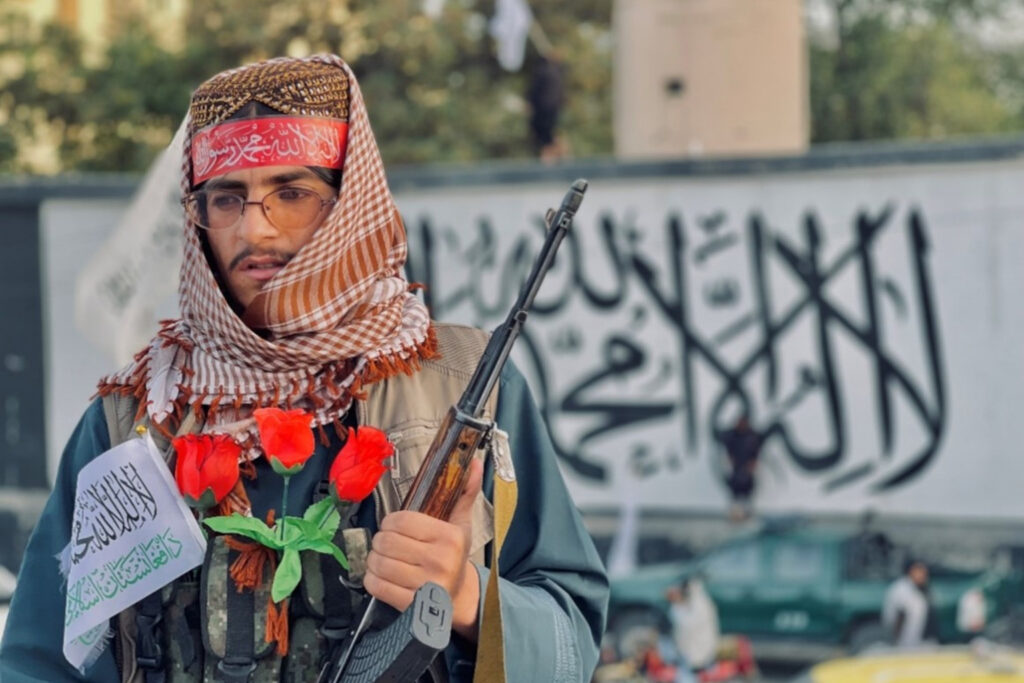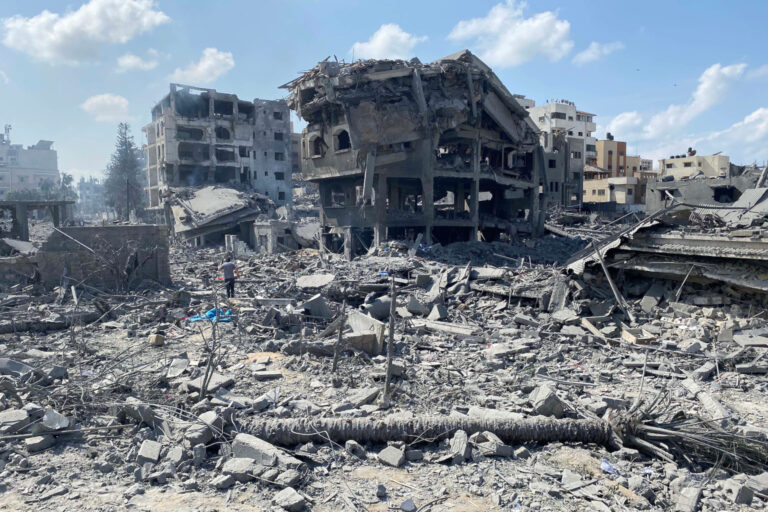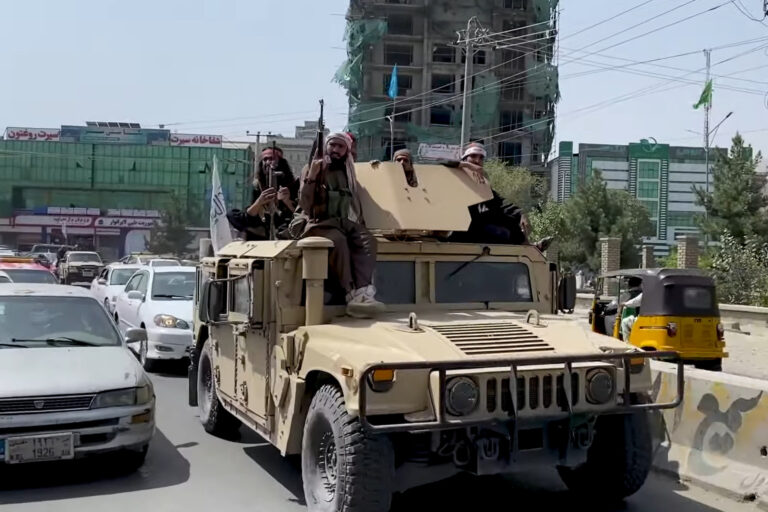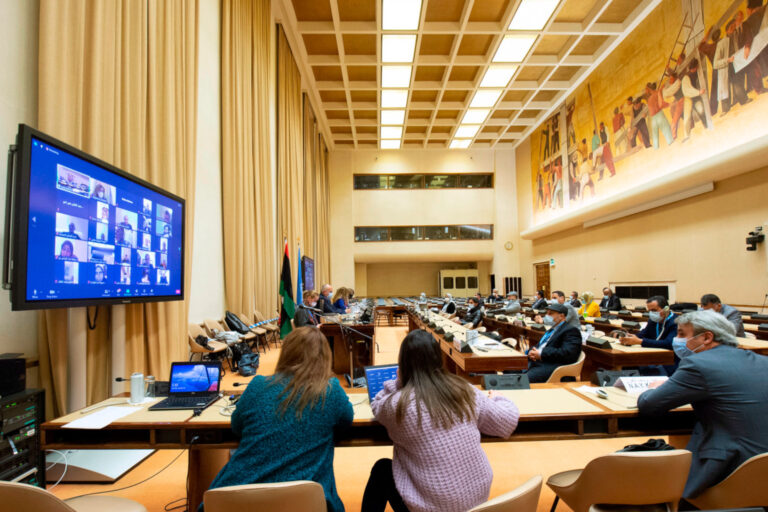February 2020 Doha Accord holds the secret of the Taliban’s freedom and rule in Afghanistan. This picture was taken when the Taliban fighters were cruising through Kabul’s streets, triumphing over the Afghan National Defense and Security Forces (ANDSF) and celebrating their victory against the Western invasion.1 August 2021 marks the official proclamation of the Taliban’s rule under the supreme leadership of Hebatullah Akhundzada.

Over the last two and half years, the Taliban’s barbaric rule has failed to institutionalize its governance and resorted to medieval practices. A barefooted Taliban fighter armed with a rocket launcher patrolling the streets of Kabul symbolizes the regression of governance in Kabul. This visual encapsulates the reversal of two decades of progress under the Republican Afghan Government, showcasing a return to rule through force, fear, and power – a stark representation of the Hobbesian state of nature.2


Hebatullah Akhundzada’s leadership enforces 7th-century Islamic principles in 21st-century Afghanistan. The destruction of the Bamiyan statue serves as a poignant reminder of the religious and ethnic bigotry prevailing in the Taliban’s first and second regimes, marked by unrelenting persecution of Shias and ethnic minorities like Hazaras.3 The stringent application of Sharia law, aligned with the Hanafi school of Islamic jurisprudence and the religious edicts of the Supreme Leader, has notably harmed Afghanistan’s society and economy, evident in glaring ways.
Women and girls are barred from wearing clothes that reveal their skin and face. They are restricted from working and going out to markets without a male family member to accompany them. The girls are barred from going to school after the sixth standard, and women and girls are instructed to obey the burqa order strictly. This picture cleverly captures the contrast between what Afghanistan was and what it became. The bustling Bamiyan market turned deserted, and yet to grasp the shocking policies resulting in gender apartheid. In the midst of this, two women in Chadori (Burqa) contemplate buying Western dresses, symbolizing the Taliban’s control over women’s lifestyles.4


Nevertheless, certain groups of women hailing from affluent segments of society persist in defying and protesting against the Taliban’s directives. These women’s movements receive support and funding from international rights-based organizations and international donors such as Human Rights Watch, UN Women, and Amnesty International Interestingly, the Taliban’s gender apartheid policies appear to be less stringent in the major cities, where women are observed with unveiled faces, often wearing sunglasses.5 However, in the majority of smaller cities, and particularly in villages, the influence of Puritanical Islam remains robust, emanating directly from Kandahar, the religious headquarters, and seat of Hebatullah Akhundzada.
The lingering apprehension about the Taliban’s historical practices of abducting, torturing, and extorting foreigners has not diminished, leading to a significant decline in the tourism industry and other sectors. A local market shopkeeper notes, “It’s rare these days to spot foreign customers in the street, even though a foreigner is seen purchasing local Afghan dress”.6 The rule of the Taliban has instilled fear and insecurity, adversely affecting businesses throughout the economy, resulting in a sharp increase in unemployment and a decline in family income.

A bunch of Afghan youths, along with the Taliban gunmen, seemingly Taliban supporter, or their helplessness with the situation awaits the unfolding of their bleak future under the Taliban’s governance.7 Joblessness has increased, and the Taliban’s massive allocation has further crushed any hope of better education and skills for youth to expand madrasas across Afghanistan with anticipation of more extremism and radicalization to fuel their support base.
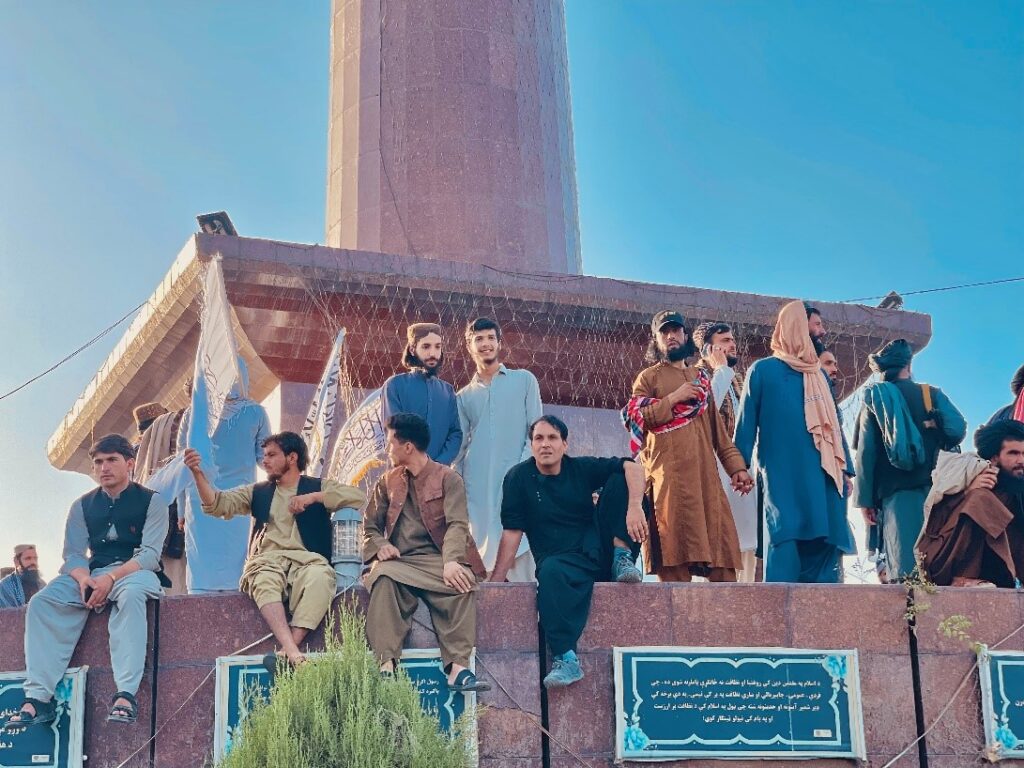
The falling Afghan economy is on a ventilator, and its currency’s stability is contingent on a $ 40 million cash infusion via helicopters every week. The economic contraction has driven unemployed men toward drug abuse, initially with a sharp increase in poppy cultivation, later banned. Despite the ban, the drug problem persists, as it paved the way for the rise of meth drugs. A group of both old and young men openly use meth on the street.8 Meth addiction is surging in Afghanistan, with individuals of various ages resorting to its use without fear.

Despite the myriad challenges the Taliban has introduced into the daily lives of ordinary Afghans and the escalating international condemnation, the Taliban have not buzzed from their stone-age policies and practices. They frequently rally support on the streets of Kabul, organizing large-scale events with flags adorning cars and bikes, attempting to deceive the world into believing they have broad backing from the Pashtun community.9 However, this portrayal sharply contradicts the reality.

Perhaps the Taliban once promised peace and stability in the aftermath of the 1994 civil war. However, today, their rule symbolizes fear, instability, and insecurity, evident in an approval rating of around 35%, indicating a significant portion of the population rejecting their governance outright. On the second anniversary of the Taliban’s recapture of Kabul on August 15, a Taliban gunman is captured in a photograph holding both roses and a gun. This image presents a striking contrast, symbolizing affection towards supporters and intimidation towards dissenters.10 How long will the silence endure under the shadow of the gun, I ask.

Acknowledgement
The authors do not report conflict of interests.
Funding
This photo-ethnography essay received support from the Afghan Diaspora Network (ADN) based in Austria, and the copyright license for the images used belongs to ADN.
Amit Kumar is a Senior Research Fellow at the Department of Humanities and Social Sciences, Birla Institute of Technology and Science, Rajasthan, India.
Dr. Veena Ramachandran is an Assistant Professor at the Department of Humanities and Social Sciences, Birla Institute of Technology and Science, Rajasthan, India.
References
“We Give the Taliban $40M per Week.” 2023. Tiger Droppings. November 2023. https://www.tigerdroppings.com/rant/politics/we-give-the-taliban-40m-per-week/110996867/.; Rahimi, Haroun. 2023. “The Taliban in Government: A Grim New Reality Is Settling In.” Al Jazeera, March 23, 2023. https://www.aljazeera.com/opinions/2023/3/23/taliban-in-government-a-grim-new-reality-is-settling-in.; Additionally corroborated by a former Afghan Republic Member of Parliament during a personal interview conducted in September 2023.
Kumar, Amit, and Veena Ramachandran. 2023. “Unpacking the Nexus: Taliban’s Control over Affiliated Terror Groups.” Afghanistan Institute for Strategic Studies. Sussex, UK: Afghanistan Institute for Strategic Studies. https://www.aissonline.org/en/publication/details/113.

